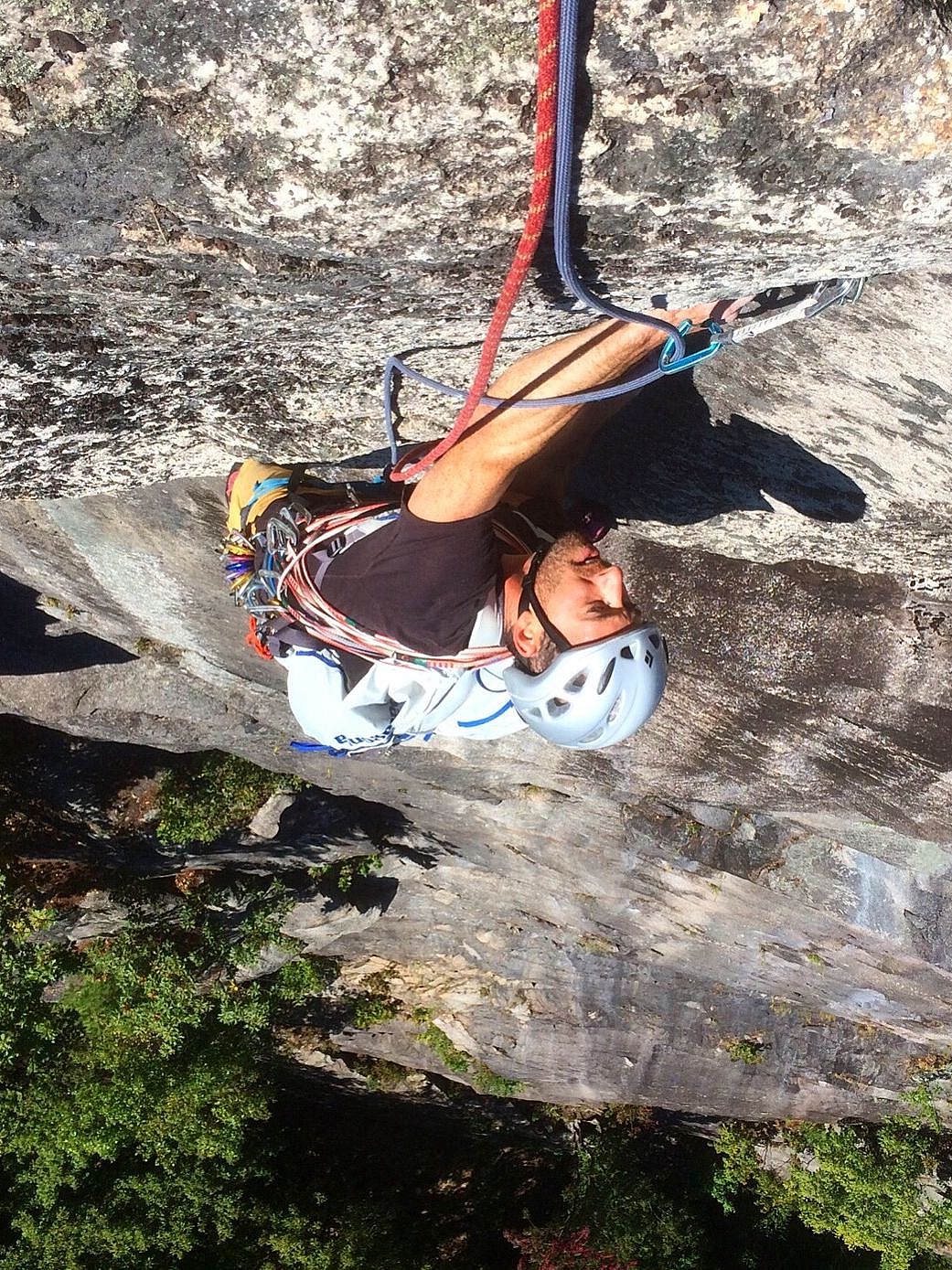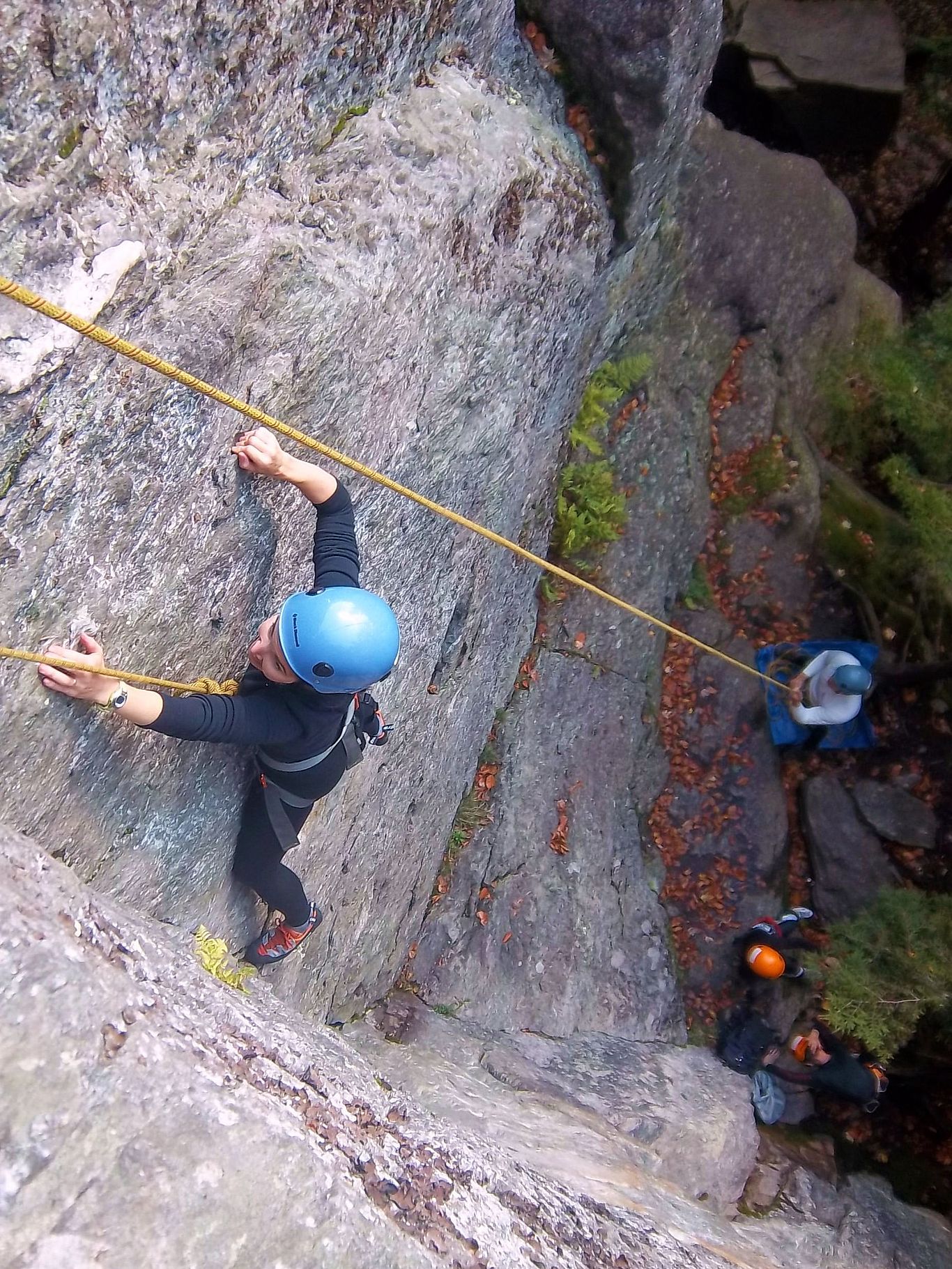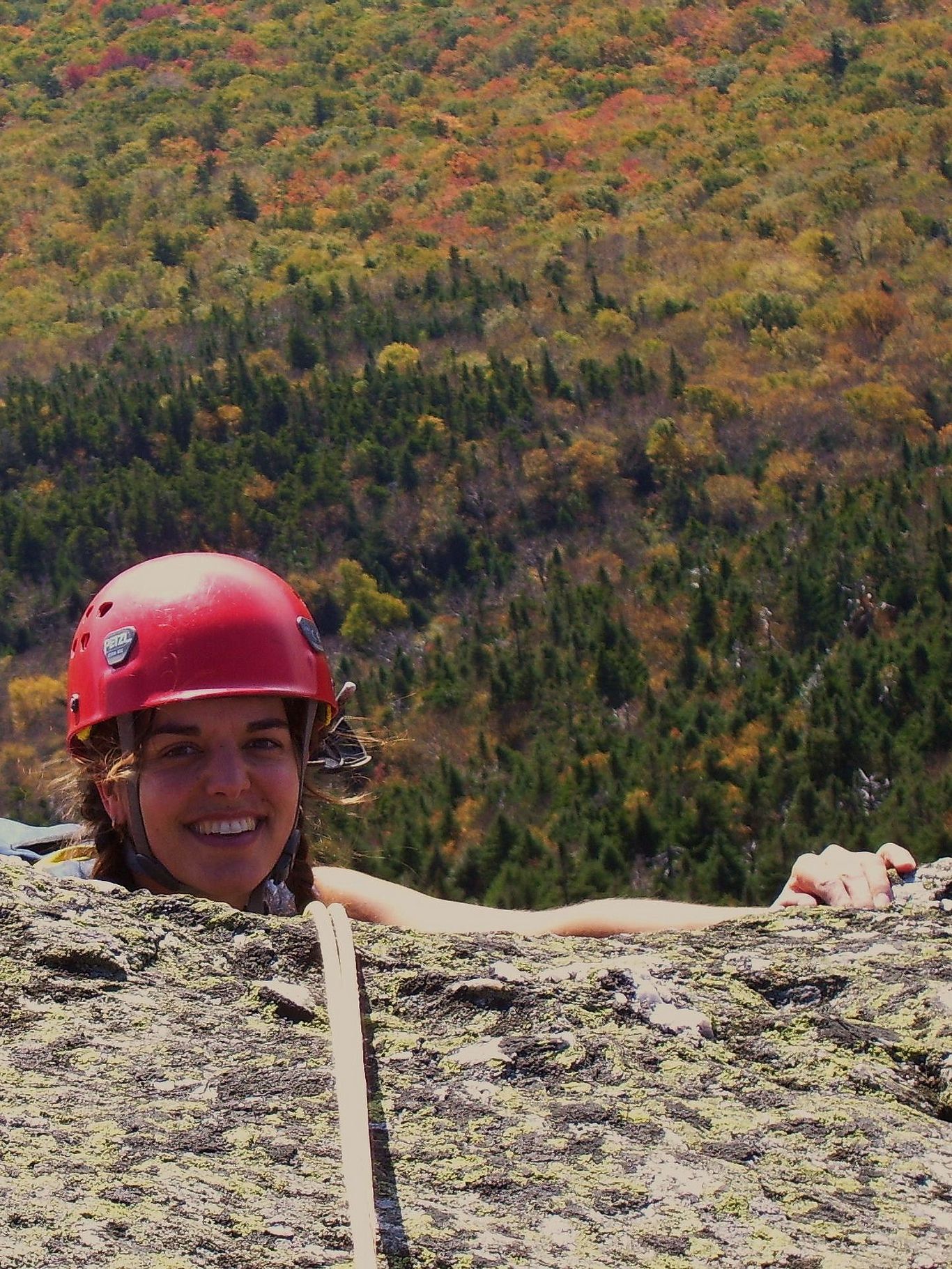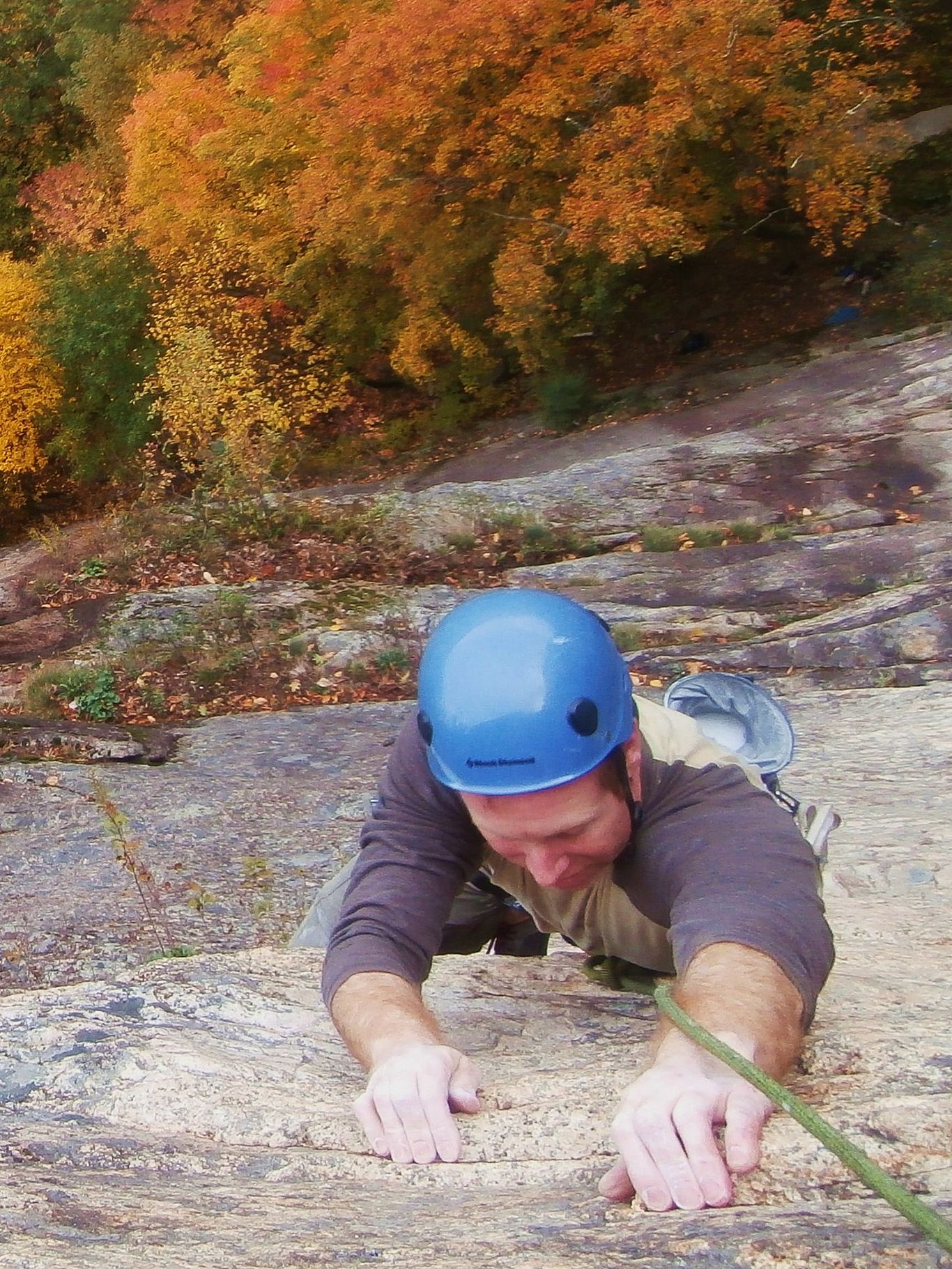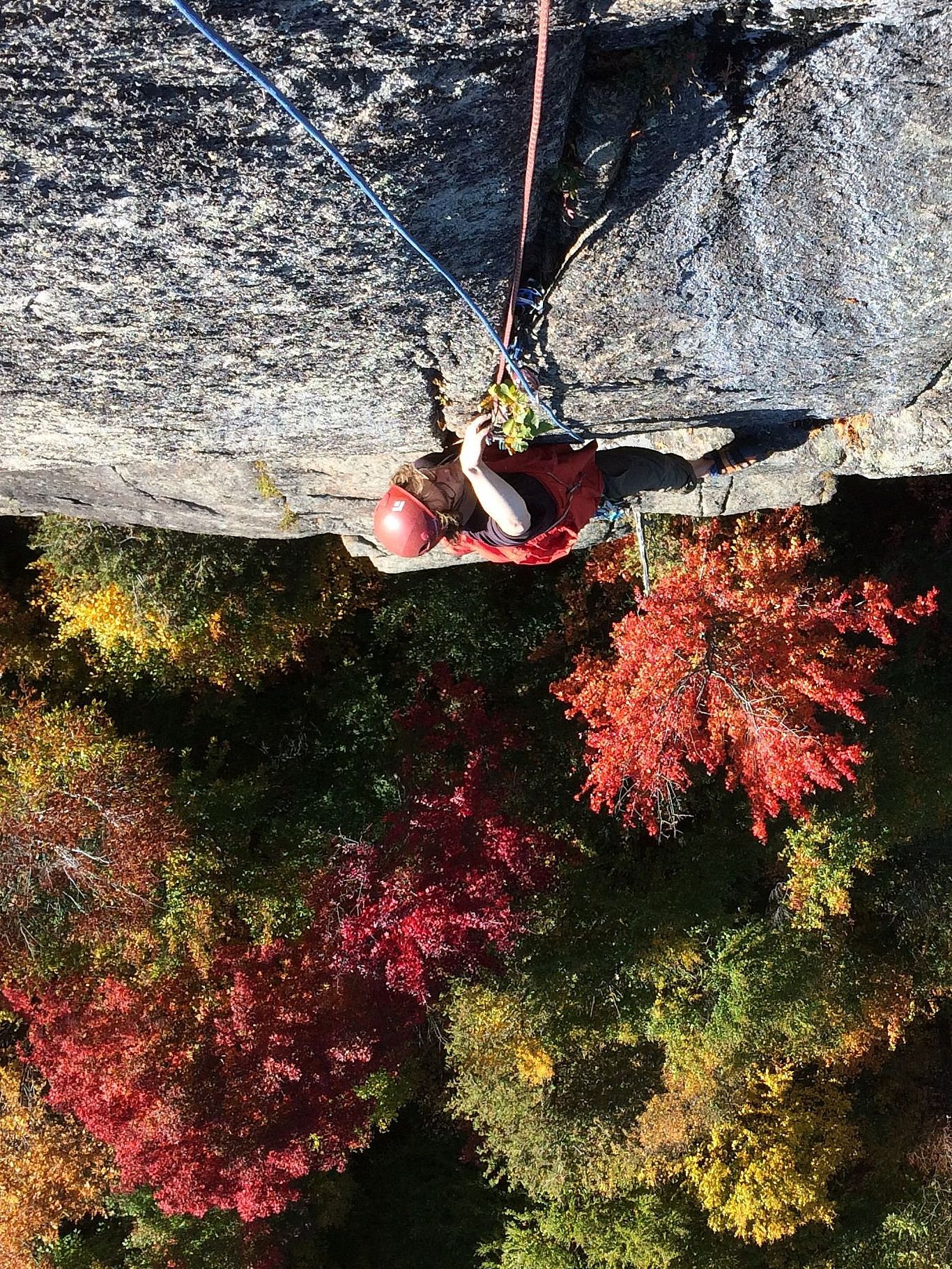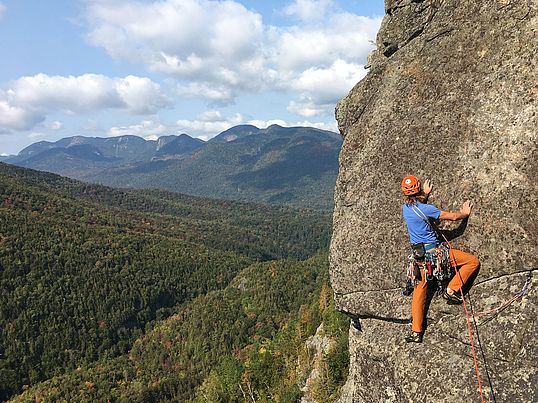
Prepping for Your Rock Climbing Adventure
We're looking forward to entering into the exciting world of rock climbing with you! To make the most of your day, please check out the following items of information:
- Overview of Your Rock Climbing Day!
- Specific Clothing & Equipment List
- Detailed Clothing & Equipment Information
If you still have some questions about preparing for your ice climbing day after reviewing these resources, please contact us—We're happy to help!
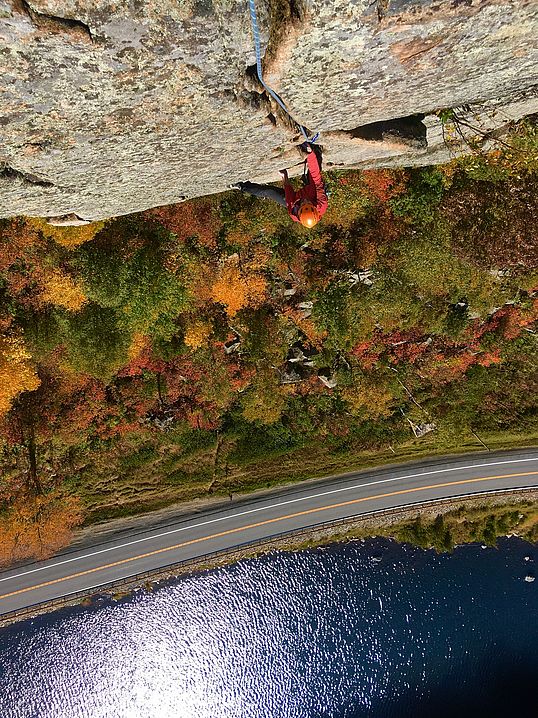
Overview of Your Rock Climbing Day!
We work with you to customize an rock climbing day tailored to your experience and your goals. Here's what an introductory day of rock climbing generally looks like:
Based on weather factors and you/your groups own needs and preferences, you'll develop a meeting time and place with your guide. Typically we meet at a designated trailhead or nearby landmark, and we generally meet at 8am. At the trailhead, we will introduce you to the gear and get you outfitted. Once you're outfitted and ready, you'll hike into the climbing site. Hike times vary depending on the climbing site, but it's usually 15-30 minutes. Please be sure to bring a pack big enough to carry all of the things found in the "Specific Clothing & Equipment List" below as well as the harness, helmet, and climbing shoes.
Once you're at the site, your guide will need a bit of time to set up some ropes on the cliff. Next, s/he will cover skills like tying into the rope, belaying, climber-belayer communication, and correct procedures for lowering climbers from the top of the cliff. We will also cover some fundamental climbing techniques. By then, people are generally chomping at the bit to climb, so it's time to go for it! In the event that the morning is a damp one, we will often begin with some rappeling before moving into climbing.
After you've had some time to get a feel for how things feel on a real outdoor rock wall, it's good to step back and cover some basics regarding climbing movement skills. Your guide can give you tips on how to effectively grip holds, balance the body, and most efficiently use your body in the vertical environments. It's usually a good idea to start out on some lower angle terrain to get a feel for effective and efficient movement and then as the day progresses to move into some steeper stuff—just let your guide know what you feel you're ready for. And, if you're a group of 1-2 people, depending on the climbing location, we may be able to do a multi-pitch (longer) climb in the afternoon.
After you've had your fill of climbing and/or rappeling, your guide will need to break down the ropes and then leave some light for the hike out. Typically, you'll be back at the trailhead around 4-5pm—though we are a customized guide service, so keep your guide posted as to your needs, energy levels, etc. Whatever the case, by the time the day ends you're guaranteed to be pretty tired and we bet you'll be pretty enthused about all the feelings of challenge and accomplishment that rock climbing offers!



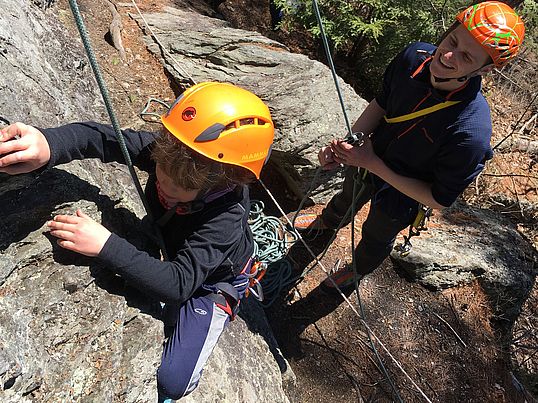
Specific Clothing & Equipment List
More detailed information about clothing & equipment appears after this list—please check it out—but in brief, here's what you'll need for a great day of rock climbing:
Clothing & Equipment
- A 20+liter pack (Big enough to fit all your clothing, food and water, plus a harness, crampons, and helmet, plus a bit of group climbing gear.)
- If you are thinking your day might involve multi-pitch climbing, it can be very handy to have a small, lightweight "peak pack" of ~15L. You can use this to put an extra layer, a few snacks, and some water in when climbing up the cliff. Contact us if you're not sure whether you'll need this.
- A full supply of snacks/lunch
- Light to mid-weight synthetic base layer for your top
- 1-2 warm non-cotton warmth layers for your top.
- Weather-resistant shell jacket.
- Light to mid-weight, flexible synthetic pants.
- Light gloves (if early or late-season).
- Light to mid-weight socks (we recommend Darn Tough brand).
- Ball cap (can be nice for the hike in).
- Comfortable trail shoes. Should have a good tread and must be closed-toed (no sandals).
- Trekking poles (Optional--Some people enjoy these for the approach and descent).
- Sun glasses
- Bug/tick spray
- Sunscreen
- Other specific first-aid/medications you may need (inhaler, epi-pen, etc)
- Camera
Food & Water
- Bring plenty of easy to eat lunch and snacks. We love the healthy and delicious Kate's Real Food Bars.
- 2 liters of water.
Adventure Spirit can supply you with all the technical gear that you need for your climbing day (harness, helmet, and shoes). We will be in contact regarding shoe sizing.
We highly recommend Ortovox for your clothing needs. Ortovox produces the highest-quality clothing, paying close attention to detail, durability, design, and ecological footprint of its products.
We highly recommend the skilled, knowledgeable staff and competitive pricing offered by GearX.com (Outdoor Gear Exchange) for all your clothing and gear needs.
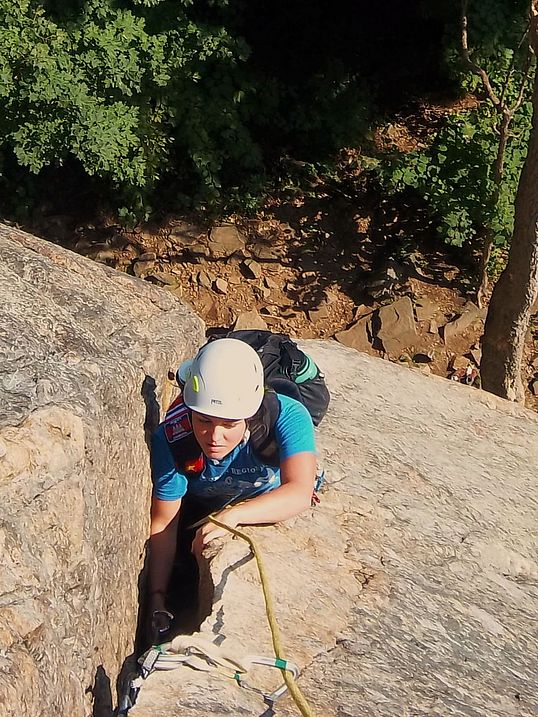
Detailed Clothing & Equipment Information
Here are some details about the information above:
Backpack: Please be sure to bring a comfortable backpack able to fit all of the items listed above, plus a bit of extra space. Throughout the day, you may be warming up and shedding some of the clothing layers you're wearing earlier in the day.
Non-Cotton: All your clothing should be non-cotton. Wool and synthetics are what you want. Cotton will not keep you warm if it becomes wet from sweat or rain. Labels on clothing will generally tell you what it's made of, but if you can't find a label, a good way to check is to find a small thread in a non-visible spot. Light the thread on fire. If it burns like a candle-wick and appears charred, it's cotton or wool. Wool will have a strong odor to it. If it burns vigorously and shrivels up, it's synthetic (the petroleum causes it to burn quickly).
Warmth Layers: Fleece or wool work well here.
Weather-Resistant/Proof Shell Layers: We want to be prepared for all weather conditions. Waterproof/windproof breathable material is needed.
First Aid/Medications: Our days will be high-activity. People with asthma should be sure to bring inhalers. Diabetics should be sure to monitor their blood sugars and respond appropriately. People with allergies should be sure to bring their epi-pen and/or other medications. These are just a just a few examples of considerations for your own first-aid needs; please speak with us if you have specific health/medical/body situations that it would be useful to know and discuss in advance. We want to work with you to create a safe and successful experience!
Click here to return to our Northeastern Rock Climbing Adventures page.
If you still some questions about preparing for your rock climbing day, please contact us—We're happy to help!

